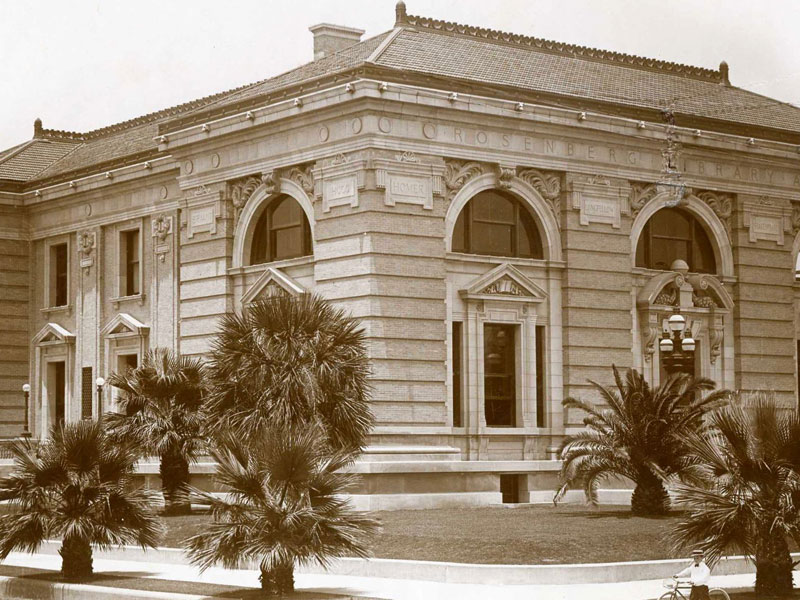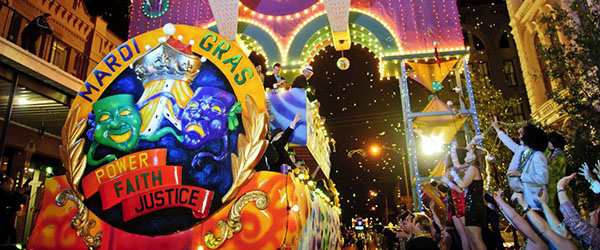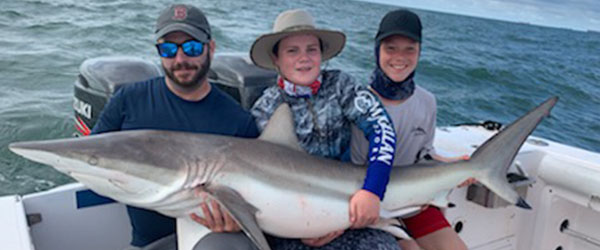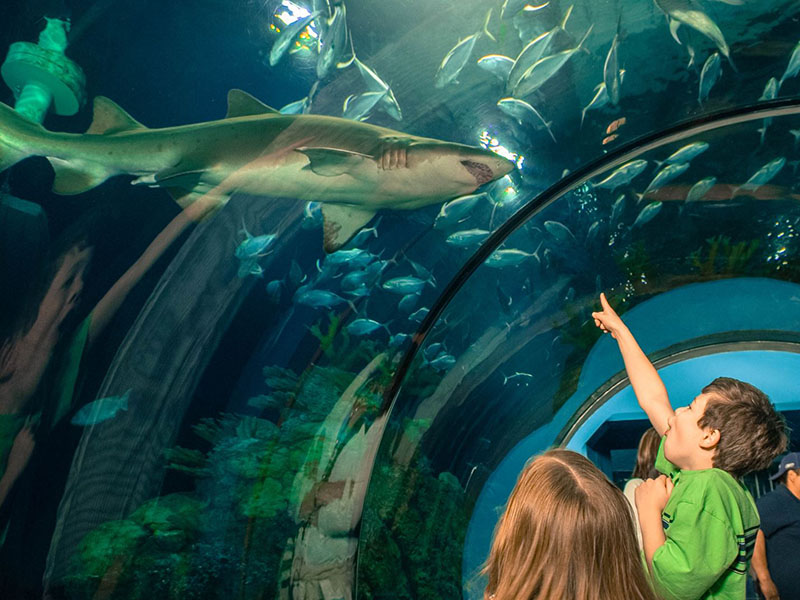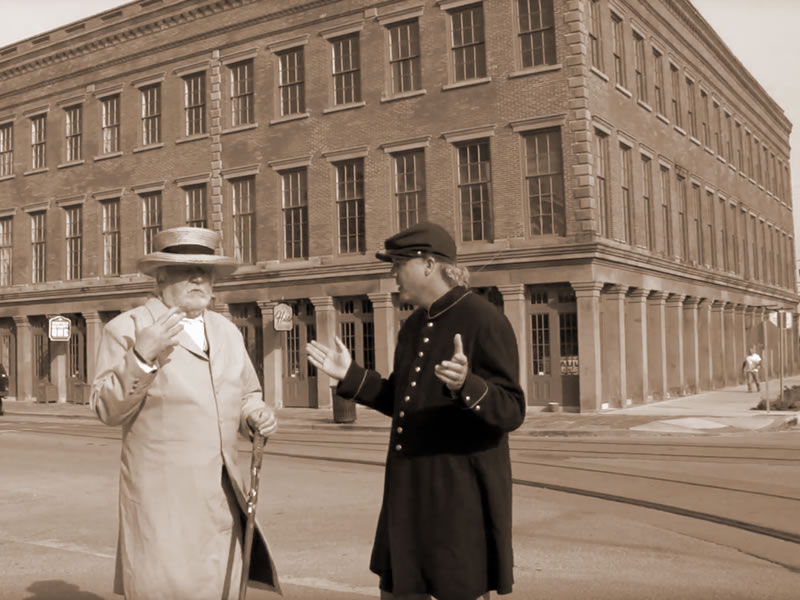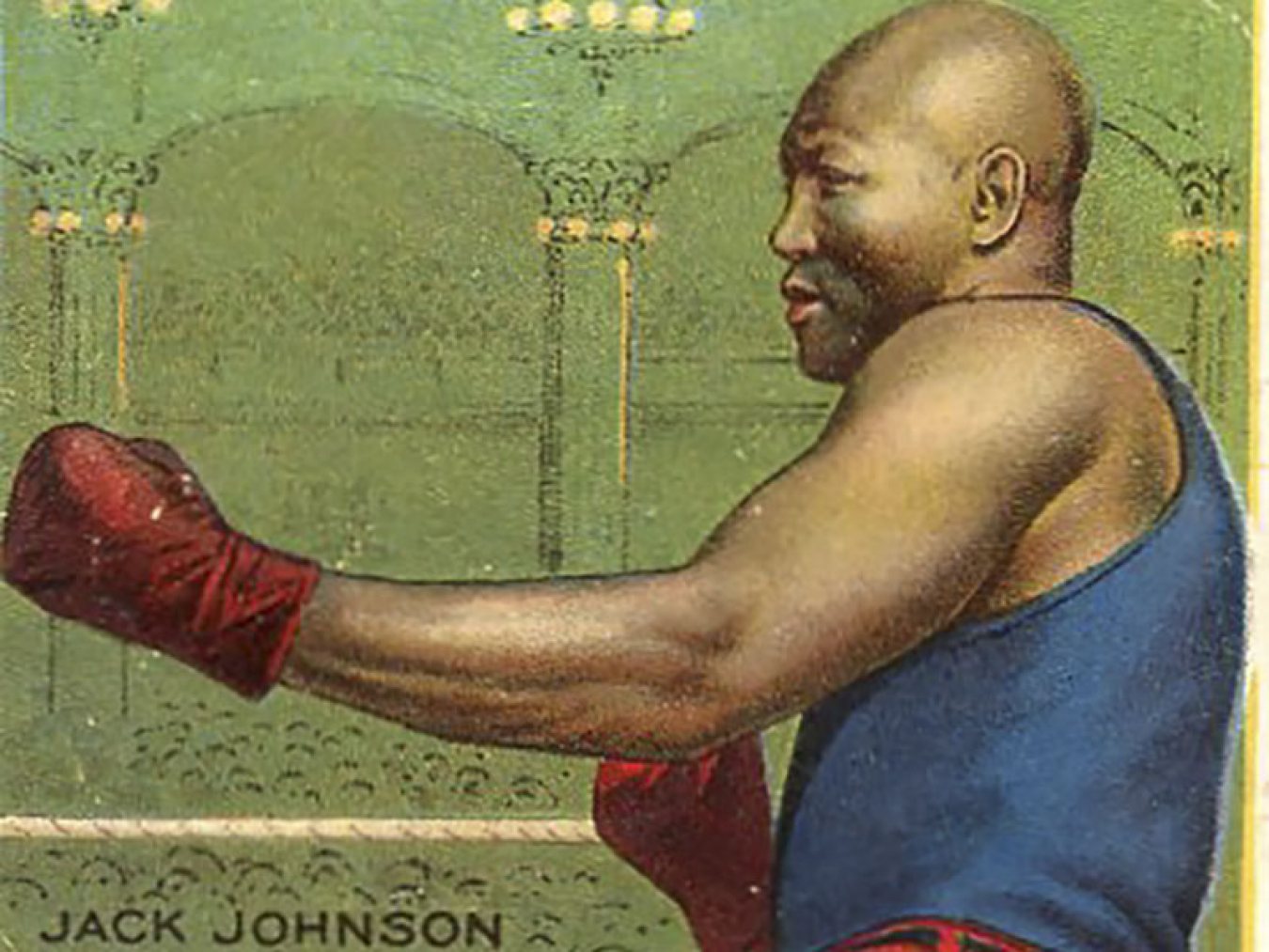The Balinese Room
Rosenberg Treasure of the Month
During the month of January, the Rosenberg Library is displaying images and items from The Balinese Room.
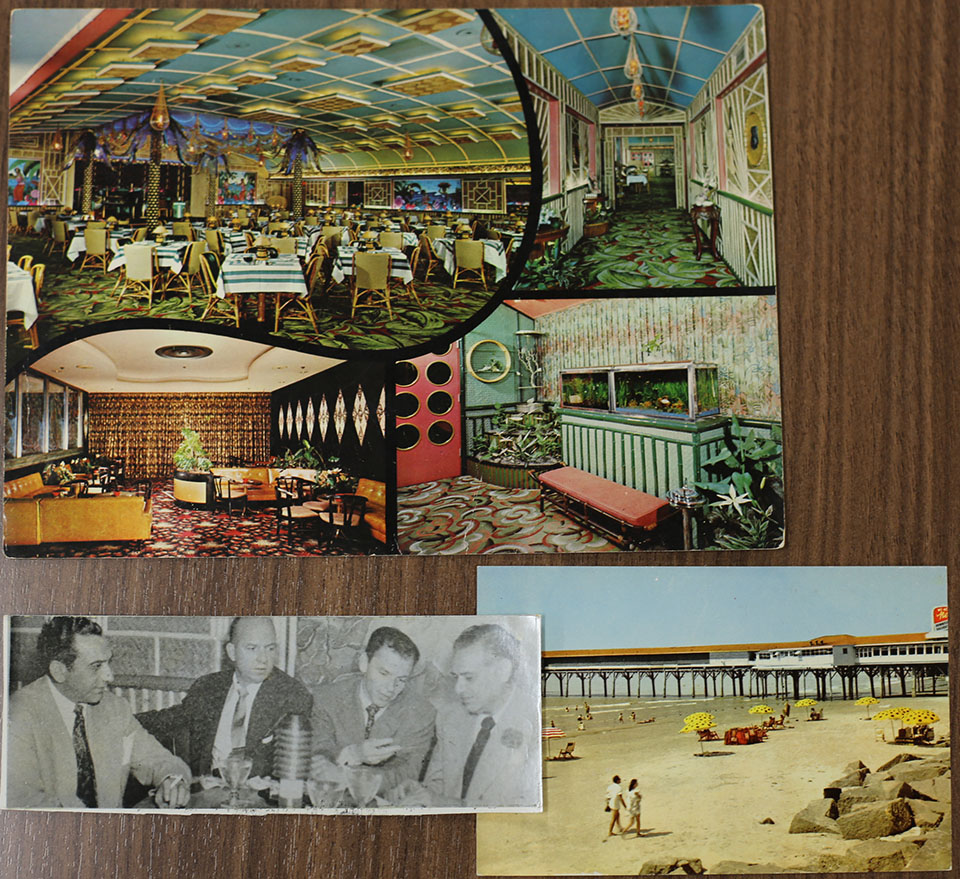
| Top: Interior of the Balinese Room jumbo postcard, Right: Postcard showing the outside of the Balinese Room, Bottom Left: from left to right, Anthony Fertitta, Jimmy Van Heusen, Frank Sinatra, and Sam Maceo at the Balinese Room, March 1950 | Courtesy of the Rosenberg Library and Museum |
On January 17, 1942, the opulent Balinese Room opened to the public at 21st street and Seawall. There, on a 600 foot pier hovering over the Gulf of Mexico, locals and tourists enjoyed the luxurious and extravagant environment of drinks, dancing and entertainment. The back room, however, was a private club for big spenders who wanted the thrill of gambling.
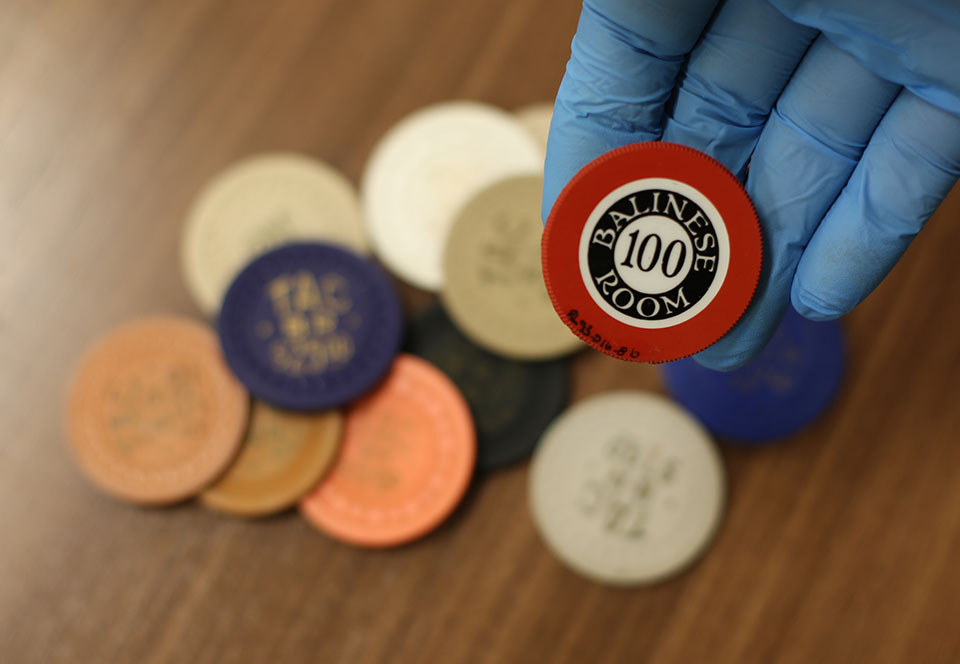
| Set of 8 Illegal Balinese Room poker chips | Courtesy of the Rosenberg Library and Museum |
By that time, gambling had become illegal in Texas. The entire Balinese Room was designed with this in mind and was crafted with trap doors, concealed compartments, and fake walls in the infamous B-room. The long stretch of the pier, infamously known as “Rangers Run,” provided enough time to transform the gambling mecca into a seemingly innocent environment. Every staff member had responsibilities when warned of a raid, including the band, which was required to play The Eyes of Texas and loudly introduce the entering Texas Rangers to the audience! The camouflage, coordination, and combined three-room-walk to the back of the pier kept the Balinese Room safe for decades.
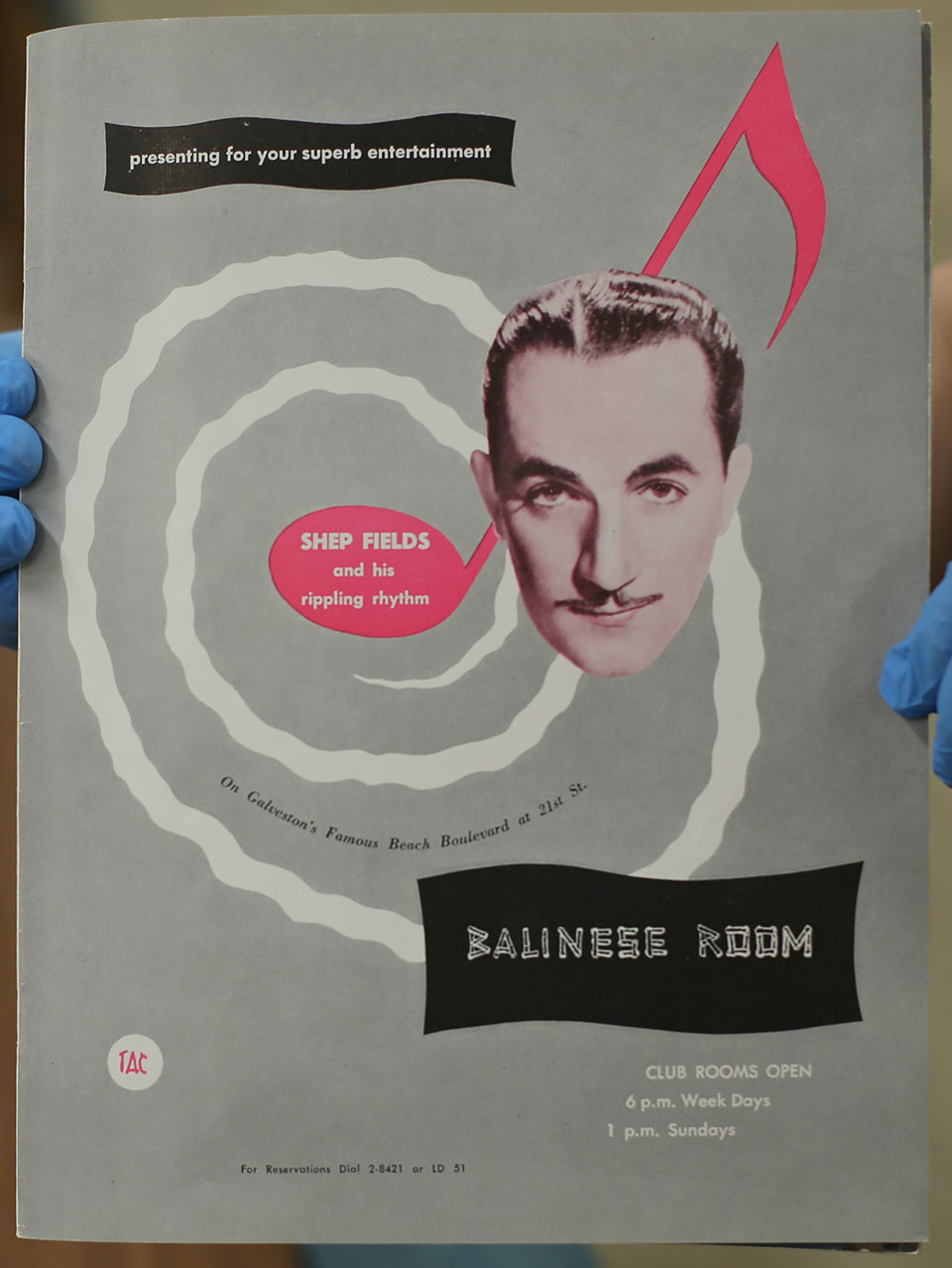
| Advertisement for the Balinese Room found on the inside back cover of the Galveston Isle magazine from July 1949 | Courtesy of the Rosenberg Library and Museum |
Alongside gambling, top-rated local entertainment could be found at the Balinese Room, including big national acts such as George Burns, Jayne Mansfield, the Marx Brothers, Bob Hope, and Frank Sinatra about three times a year. These stars not only came to perform, but to dine, dance, and gamble. When not featuring a national act, Sam and Rose hired local musicians to play the latest music and entertain and fill the dance floor. The location was nationally recognized and boosted tourism to the island; everyone wanted to experience the Balinese Room.
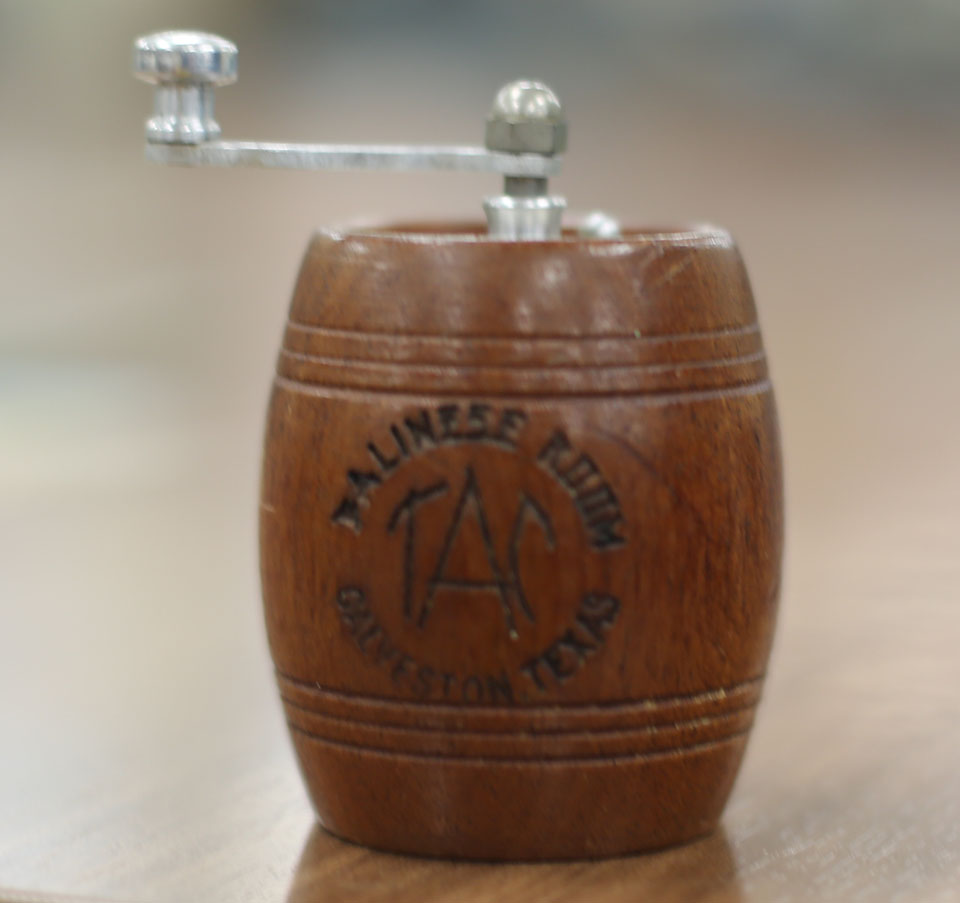
| Souvenir pepper mill from the Balinese Room made of wood, circa 1950 | Courtesy of the Rosenberg Library and Museum |
Originally established as the final incarnation of a series of project places, the Balinese Room was owned and operated by brothers Salvador (Sam) and Rosario (Rose) Maceo. Around 1910, the Maceo brothers immigrated to Galveston and were soon followed by the rest of their family. With business sense, a rumored mafia upbringing, and impeccable timing, these brothers quickly capitalized on the passage of the 18th Amendment, which prohibited alcohol consumption.
During this time, Sam and Rose began opening and operating establishments that offered illegal liquor and gambling to their clientele. The first of these establishments was called Chop Suey in 1923, followed by The Grotto in 1928. The Grotto was closed within a year by the Texas Rangers due to the rampant liquor and gambling violations.
In 1932, the Maceo brothers opened a third establishment at the end of a 200-foot pier. Named the Sui Jen Café, it was known for its Oriental name and decorations. Local lore claims that the Maceos decided to rename and renovate the café after learning about the bombing of Pearl Harbor.
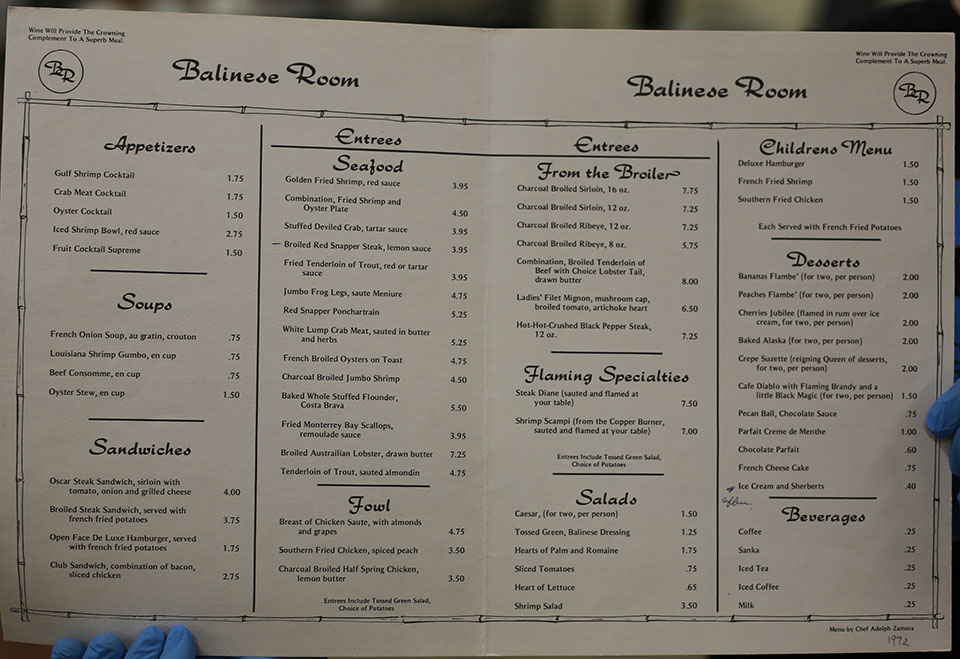
| Menu from the Balinese Room | Courtesy of the Rosenberg Library and Museum |
In 1941, those changes birthed the establishment we know today as the Balinese Room, this time redesigned with a South Pacific theme by a designer that Sam found named Virgil Quadrie. Quadrie transformed the club in a month’s time and gave The Balinese Room its name. The new décor included a large aquarium that took up one wall of a lounge, palm trees, lights, a bandstand, and an elegant dining room. Nothing was too good for the planned establishment. Only the best would do for the building design, staff, and entertainment.
As a result of its status and place in the history of Galveston, the Balinese Room eventually earned a listing on the National Register of Historic Places. Unfortunately, it was destroyed by Hurricane Ike in 2008, leaving only its historic entrance arch on the seawall.
But Galvestonians keep the legendary reputation of the Balinese Room alive. Ask anyone, and the stories will include mixtures of truth, embellishment, and fiction. It’s not hard to imagine why. The Balinese Room offered decadence, illegal thrills, and a pair of brothers who were larger than life and very much in charge.
The Treasure of the Month is located on the library’s historic second floor near the East Entrance. It can be viewed during regular library hours, 9:00 a.m. to 5:45 p.m. Monday through Saturday and from 9:00 a.m. – 8:45 p.m. on Tuesdays and Thursdays. For more information, please contact Ivy Albright, Museum Curator at 409.763.8854 Ext. 125 or at museum@rosenberg-library.org.
Discounted Tickets
Call Today. Get "Hooked Up"
Rosenberg Library
Rosenberg Library has offered over a century of community service to the Galveston area, and is the oldest public library in Texas in continuous operation. The building itself was dedicated on June 22, 1904, the birthday of its patron, Henry Rosenberg. The Moody Memorial Wing opened in 1971, more than doubling the floor space and allowing for a children’s library, a history center, several galleries to showcase museum collections, and later, a computer lab. The Library accepted its first museum piece shortly after it opened in 1904. Since then, thousands of rare and interesting objects from around the world have been added to the collection. Each month they display a “Treasure of the Month”. Learn more by visiting the Rosenberg Library page and the Gifts of Henry Rosenberg section.